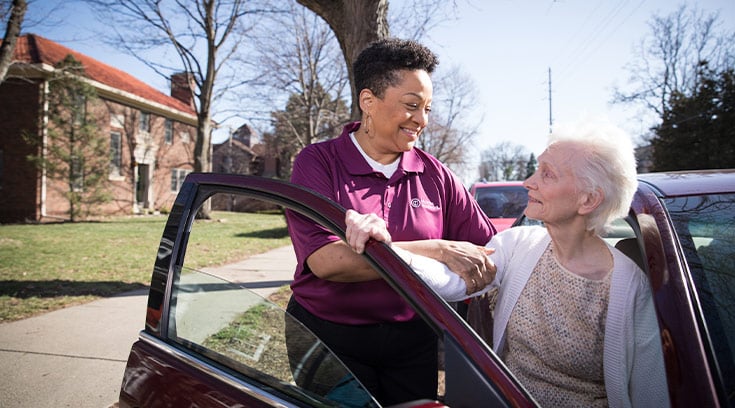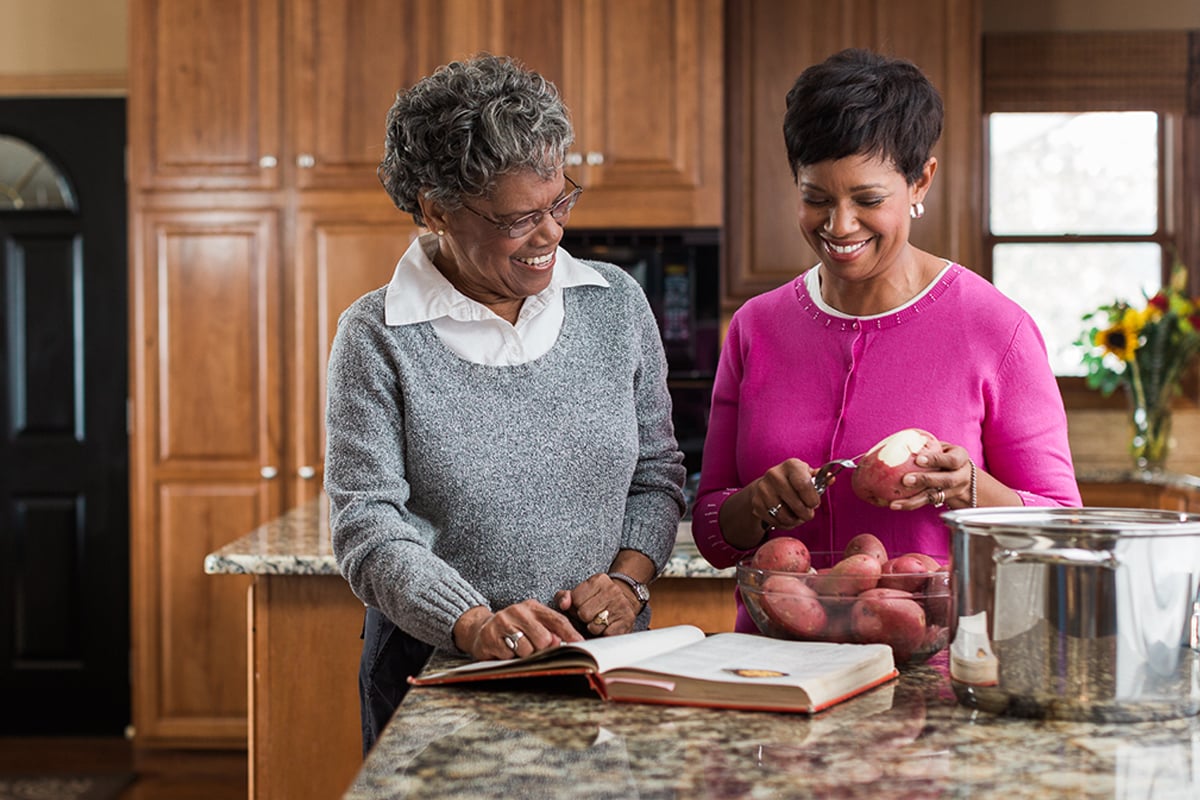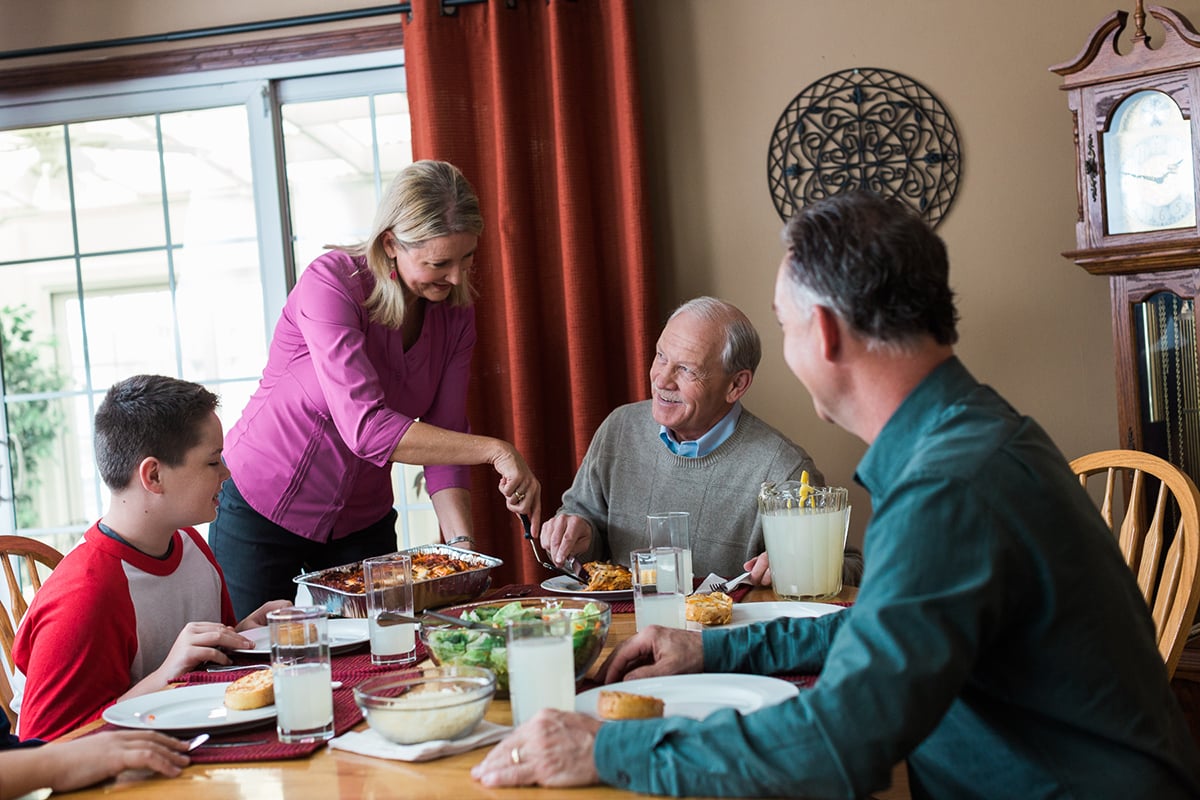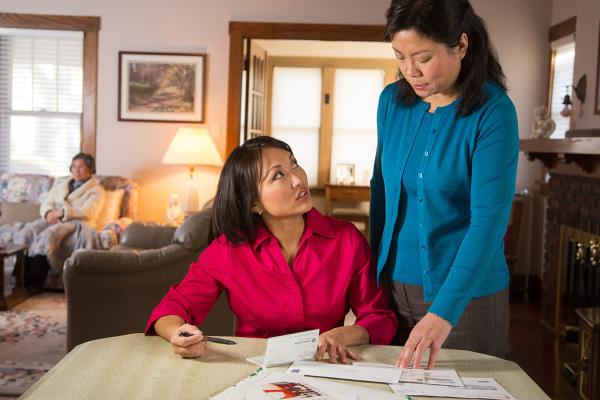A companionship diet is more than just eating together, it’s creating an experience an aging loved one and his or her family caregiver will both enjoy.
According to Registered Dietitian Nutritionist Shannon Muhs and Home Instead, Inc., Gerontologist and Caregiver Advocate Dr. Lakelyn Eichenberger, here are six ways you can do just that.
1. Involve your loved one in the preparation process.
If your loved one is up to it, let them tackle some of the meal prep. Perhaps they can still peel potatoes or frost the cake. If nothing else, suggest he or she sit and chat while you’re cooking, or give advice from the sidelines.
2. Create a relaxed and positive atmosphere.
Emphasize lighting, happy music and low stress. “Good vibes will help everyone involved want to repeat the experience,” Muhs said. “I think that’s key.”
3. Plan simple meals.
Check-in with an older adult before dinner and ask them to select a favorite recipe that you could make. Don’t make mealtimes too hard, especially if they have mobility limitations or live with dementia. “I think of finger foods, bite-size pieces, familiar comfort food,” Muhs said. “If chicken nuggets are the only chicken a loved one will eat, that’s appropriate. Combine with green beans and a starchy vegetable like potato chunks or a whole grain like whole wheat toast strips.”
4. Connect any way possible.
“Any time a family is around the same table engaging in conversation would be the most meaningful and rich experience,” Eichenberger said. That’s not always possible. “Even calling up a loved one at mealtime, putting the speaker phone on and chatting together are good options. Or try to make the same meal, such as spaghetti, and compare recipes and engage virtually or over the phone. FaceTime calls during mealtimes could help an older adult feel less isolated.
5. Set aside time for your older loved one to share a story.
Engage in meaningful conversations. “Ask loved ones about the foods they grew up loving or how supermarkets have changed over time,” Eichenberger said. “Reminisce and get to know the older adults and ask them about their past. Make it an intergenerational experience. Pass down those family stories. A lot of that happens over meals shared at the dinner table.”
6. Make dinner a regular occurrence, no matter what.
Make a commitment that can be counted on, even if it’s take-out or virtual, Muhs said. “I think that security needs to be there to signify companionship, because a true companion doesn’t let you down.” Making meals a regular occurrence will help keep older adults engaged.
Check out the eight tips that can help ensure older adults are getting a nutritious diet and these healthy recipes to try with the whole family.
Compassionate Home Care





